I'm designing a transimpedance amplifier for a SiPM (Silicon Photo Multiplier Array Broadcom AFBR-S4N44C013) sensor. I want the output voltage to range between 0 and 3.2 V max so I can input it into an Arduino.
I'm using a 36 V bias voltage from a custom 3.2 V to 36 V booster. The main issue I'm facing right now is that even though the output of the op-amp varies proportionally with the brightness, the range is in the millivolts (20 - 100 mV) when the power is on and 0 - 45 mV when the power is off. Changing the feedback resistor R5 to 100k fixed the opamp output at around 0 V. Any suggestions for how to fix this and amplify the output to the desired range?
I've attached the schematic. Also, the buffer section of the circuit is not being used right now. If you have any suggestions for how to fix the issue that the buffer is powered by 3.3V but receives the full 36V, that would help too.
Here's the datasheet of the SiPM: https://docs.broadcom.com/doc/AFBR-S4N44C013-DS
Thank you.
